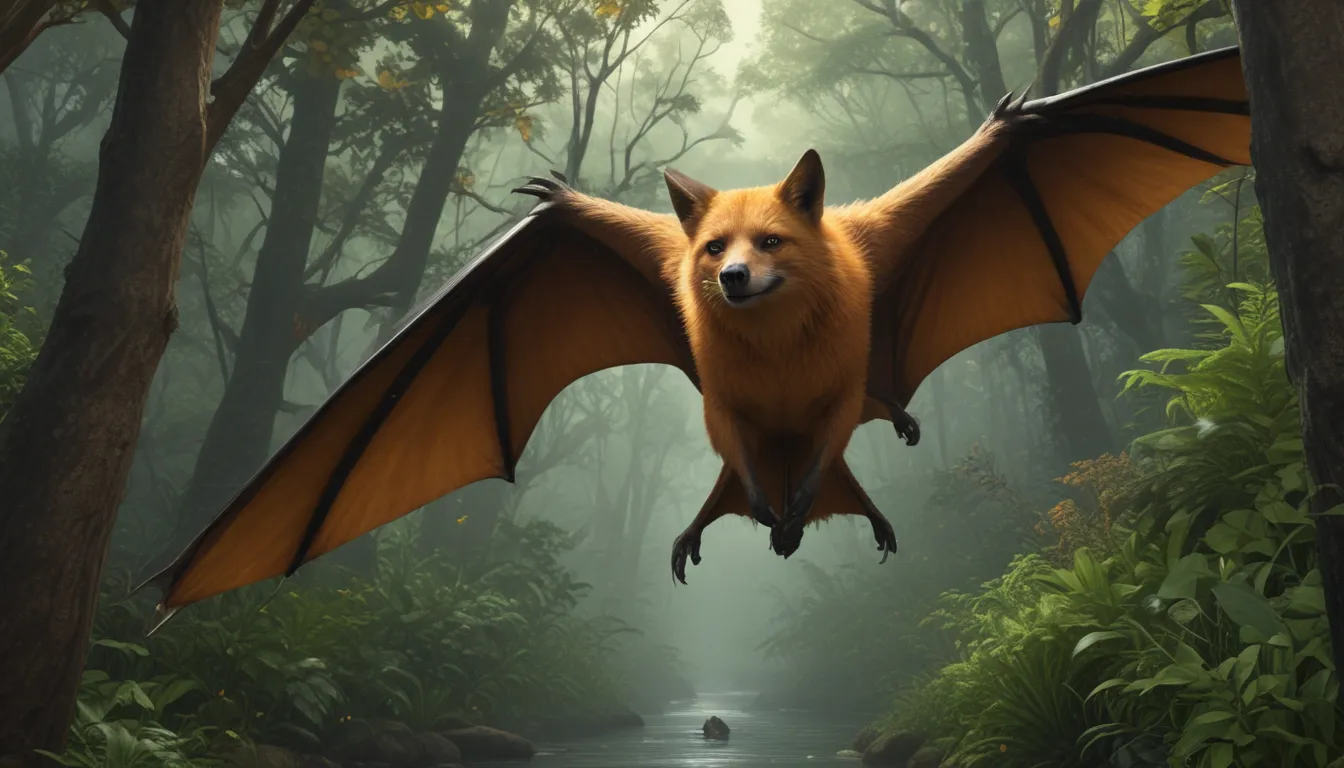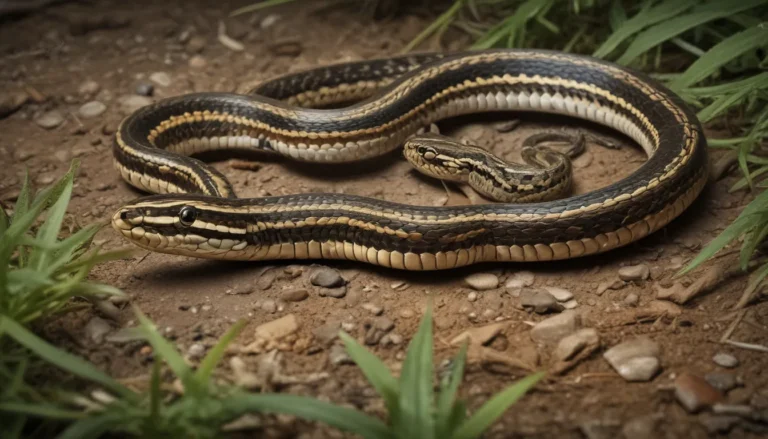The pictures we use in our articles might not show exactly what the words say. We choose these pictures to make you interested in reading more. The pictures work together with the words but don’t take their place. The words still tell you the important facts.
Welcome to the enchanting world of the giant golden-crowned flying fox, the largest bat in the world with wings that span up to an impressive 5½ feet long. Flying gracefully through the forests of the Philippines, this magnificent fruit-eating bat captivates all who have the privilege of witnessing its beauty. Despite its spooky appearance, this majestic megabat is a gentle giant with fascinating characteristics waiting to be explored. Join us on a journey to discover the wonder of the giant golden-crowned flying fox with these enlightening facts.
Unveiling the World’s Largest Bat
The giant golden-crowned flying fox, although not human-sized, boasts a substantial size compared to other bat species. With bodies ranging from 7 to 11.4 inches long, these majestic creatures possess wingspans that reach an astounding 5.5 feet. Their membranous wings, devoid of fur, aid them in their graceful flight through forest canopies. While not the heaviest bats in the world, with weights up to 2.6 pounds, they hold the title of the largest bat species due to their impressive wingspan.
Behold the Masters of Flight
Built for sustained flight, giant golden-crowned flying foxes have evolved exceptional adaptations to support their aerial endeavors. Their cardiovascular systems boast large lung volumes, fast heart rates, and rapid oxygen consumption rates, enabling them to traverse distances of up to 25 miles in a single night while foraging for food.
A Treasure of the Philippines
Endemic to the Philippines, the giant golden-crowned flying fox is a unique treasure of the country. Existing only within the Philippine islands of Batanes, Cebu, Bohol, Boracay, and Palawan, this bat species holds the honor of being the first endemic species of the Philippines ever described. Sadly, their population in Panay had been extinct since the late 1800s, emphasizing the importance of preserving their remaining habitats.
The Forest Dwellers
Preferring large primary forests and mature secondary forests for their habitat, golden-crowned flying foxes exhibit a preference for specific environments. Found in elevations ranging from sea level to 3,600 feet, these majestic bats also roost in small offshore islands, mangrove forests, bamboo clumps, and swampy forests. While they may occasionally forage in agricultural fields and disturbed forests, their primary abodes lie in undisturbed, natural settings.
A Misnomer of Beauty
Despite their name, which likens them to foxes, giant golden-crowned flying foxes are far from being related to the canine species. Belonging to the mammalian order Chiroptera, these bats are known for their distinct golden-yellow fur atop their heads, which gives them their unique name. With fur colors ranging from maroon to dark brown and black, these gentle giants charm with their visual resemblance to earthly creatures.
The Gentle Giants of the Forest
While their appearance may hint at a vampire-like quality, giant golden-crowned flying foxes are gentle frugivores with a penchant for fruits. Figs, particularly Ficus subcordata, form a significant portion of their diet, with fig seeds comprising 41% of their droppings. Despite their menacing facade, these bats also include leaves in their diet, crushing them to swallow the sap within.
Guardians of the Night Sky
Unlike many other bat species, golden-crowned flying foxes do not rely on echolocation for their survival. Gifted with excellent eyesight and a keen sense of smell, they navigate the night sky with ease. With large brown eyes capable of superior night vision and a sense of smell rivaling that of domestic dogs, these bats are well-equipped for their nocturnal adventures.
The Circle of Life
As vital members of their ecosystem, giant golden-crowned flying foxes play a crucial role in maintaining ecological balance. Dispersing seeds through their droppings, they ensure healthy populations of fig trees and other plant species within the forests they inhabit. Their presence as keystone species highlights the significance of their existence in preserving the delicate balance of nature.
Social Creatures of the Night
Engaging in various social behaviors, giant golden-crowned flying foxes foster bonds through mutual grooming and play-fighting. Mutual grooming aids in parasite removal and strengthens social bonds, while play-fighting among young males enhances their interactions and camaraderie.
Unity in Diversity
Giant golden-crowned flying foxes often share roosts with other bat species, such as the Malayan flying fox and the small flying fox. Living in large colonies of up to 100,000 individuals, with varied species compositions, they establish a united front against potential predators. Segregating themselves by species helps mitigate conflicts and ensures coexistence within shared habitats.
The Enigmatic Scent
Though devoid of specific scent glands, giant golden-crowned flying foxes exude a distinct odor suggesting the use of smell as a means of communication. The mystery surrounding their unique scent adds to the allure of these majestic bats.
Cool Splashes of Delight
Regular visitors to river corridors, golden-crowned flying foxes enjoy taking baths to groom themselves. Using their wings, they scoop up water and spread it over their bodies, relishing in the refreshing dips.
The Slumbering Giants
Revealed through scientific studies, giant golden-crowned flying foxes spend a significant portion of their day asleep, resting on cliff edges, steep slopes, or hardwood trees. Females exhibit longer resting periods compared to males, focusing on nurturing behaviors, while males engage in activities that enhance their mating prospects.
Guardians of the Night, Potential Vectors of Disease
As with many bat species, giant golden-crowned flying foxes harbor the potential to carry infectious diseases, including the Reston virus. Causing concerns regarding zoonotic transmission, these instances highlight the need for vigilance around wildlife hosts of such diseases.
Slow and Steady Reproduction
Reproducing slowly, these exceptional bats give birth every two years at most, with average litters consisting of only one pup. Matures gradually, females reaching sexual maturity after two years, contributing to the rarity of the species.
A Species on the Brink
Once common, the populations of giant golden-crowned flying foxes have declined dramatically due to deforestation and human poaching. Endangered and facing the threat of extinction, these gentle giants are in dire need of conservation efforts to protect their dwindling habitats and ensure their survival.
Guardians of the Night Skies
In a concerted effort to preserve these majestic creatures, local and international organizations have joined forces to safeguard the remaining populations of giant golden-crowned flying foxes. Through conservation measures and protection of their natural habitats, these organizations work tirelessly to ensure the continued existence of the largest bat species in the world.
As we delve into the world of the giant golden-crowned flying fox, we discover a species teetering on the brink of extinction yet awe-inspiring in its grandeur and beauty. The importance of preserving these gentle giants resonates within the hearts of wildlife enthusiasts and conservationists worldwide, echoing the urgent call to action to protect these magnificent creatures for generations to come. Join us in our mission to safeguard the majesty of the giant golden-crowned flying fox, standing as guardians of the night skies and symbols of the delicate balance of nature.






